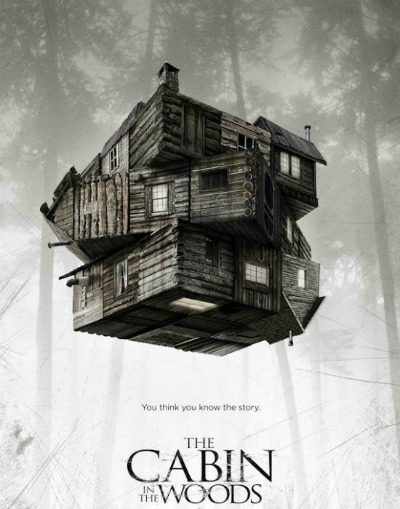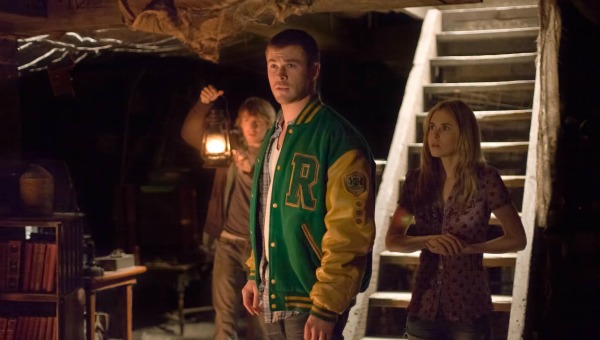 From the beginning, the buzz about CABIN IN THE WOODS has been that it’s a horror movie, but it’s not just a horror movie. More accurately, it could be said that it’s more of a horror movie, it’s the matryoshka of horror movies, story-shaped box within yet another story-shaped box. Why do we go to scary films where people are murdered horribly by hideous creatures, at times even by deformed, malignant versions of humans? CABIN IN THE WOODS has an answer, and if you, like me, always want there to be an additional layer or two in the story, the answer is highly satisfying.
From the beginning, the buzz about CABIN IN THE WOODS has been that it’s a horror movie, but it’s not just a horror movie. More accurately, it could be said that it’s more of a horror movie, it’s the matryoshka of horror movies, story-shaped box within yet another story-shaped box. Why do we go to scary films where people are murdered horribly by hideous creatures, at times even by deformed, malignant versions of humans? CABIN IN THE WOODS has an answer, and if you, like me, always want there to be an additional layer or two in the story, the answer is highly satisfying.
Five kids go to a cabin in the woods for a weekend: simple enough and you’ve seen it before, a thousand times. But the kids, the cabin, the woods and the weekend are not what they appear to be on the surface. From the beginning, we know the kids are being monitored and manipulated by teams of technicians, scientists, and field agents in a mysterious facility, headed up by Sitterson (Richard Jenkins) and Hadley (Bradley Whitford), a pair of wise-cracking suits whose job, it appears, is to ensure youthful camping fatalities.
… a cast ready to do the heavy lifting horror requires, but with the delicate touch necessary to dark comedy.
To say much more ventures into spoiler-country, where we cannot stop, but a some words of praise are due the actors playing the kids: Kristen Connoly, Jesse Williams, and pre-Thor Chris Hemsworth all turn in nuanced performances. Fran Kranz is at his nerd-noxious best as the too-smart stoner and Anna Hutchison has a disturbingly sexy make-out with a mounted wolf’s head (or maybe that was just me) (just me?) (oh dear). Throw in a few cameos, both broadly recognizable and Whedonverse specific, and you have a cast ready to do the heavy lifting horror requires, but with the delicate touch necessary to dark comedy.
When you go genre-busting, you create something unclassifiable, but it must not be formless: audiences need to be able to find the key to the puzzle, the a-ha moment that seals understanding. To that end, Whedon and Goddard (the pair co-wrote, with Goddard directing) blithely sling trope, homage, and reference galore into the mix, making CABIN IN THE WOODS a genre-rich treat for the horror connoisseur, riffing on all that has come before while simultaneously posing the question to the viewer: what happens when the prisoner leaves the cave? CABIN IN THE WOODS somehow manages to be bloody, dark, funny, and existential all at once. Why does everyone have to die at the end of a horror movie? Wouldn’t you like to know?

